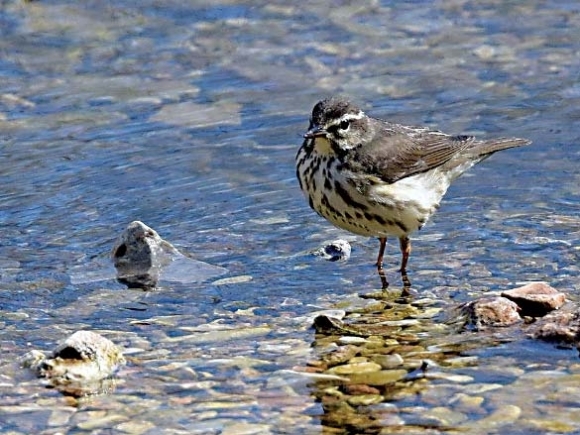The Naturalist's Corner: It really is spring

I was reconnoitering the Buck Creek Serpentine Barrens on Monday March 27, with Brent Martin, Southern Appalachian regional director at The Wilderness Society, for an upcoming field trip with the Franklin Bird club on April 24. The Serpentine Barrens is located along Buck Creek in Clay County, off U.S. 64 about 17 miles west of Franklin. The barrens is a botanically distinct area created by the dominant serpentinized rock types — dunite and olivine. The area is home to many rare and/or endemic plants because of the rare soils created by the serpentinized rock and two decades of prescribed burning by the Forest Service.
I have several bird points that I survey annually for the U.S. Forest Service along Buck Creek Road, so the idea for a “double-dipping” field trip came naturally. Brent and I went over to get a feel for where and how to access the barrens and tie that into birding stops. While there was little going on with regards to wildflowers at this early date — we did encounter a few violets in flower — the gray, wooded mountainsides were beginning to awaken with bird song.
Blue-headed vireos were by far the most common and most vocal migrants. I believe we heard them at almost every stop. But what sealed the spring deal for me — we were cruising along the bumpy gravel road with Buck Creek churning just outside the car windows when above the din came the loud slurred whistles of a Louisiana waterthrush. The big voice of the Louisiana waterthrush allows it to be heard over the noise of the rushing streams and rivers it nests along.
It is one of — if not the earliest — wood warblers to return to its nesting habitat in the Southern Appalachians every spring. This handsome small chorister is sleek brown above with a bold white eye stripe and brown-streaked breast and flanks. The Louisiana waterthrush has a look-alike cousin, the northern waterthrush that follows it in migration.
The northern waterthrush does not nest in the Southern Appalachians but migrates through. It is almost a dead ringer for its cousin. It has a brown back with brown streaking on its breast and flanks like the Louisiana but the eye stripe is creamy or buffy and the throat is finely streaked whereas the Louisiana has a clear throat. Northern waterthrushes prefer still or sluggish waters and we may get to see one at the large bog at the end of Buck Creek road.
Other signs of spring we observed included a green darner dragonfly, several spring azure butterflies, one fresh and gloriously orange eastern comma and a pair of dueling brown creepers.
Related Items
Ready or not spring has sprung! If you are interested in the April field trip to the Buck Creek Serpentine Barrens check out the Franklin Bird Club’s website at https://franklinbirdclub.com. It promises to be a great outing with lots of birds, bugs and bushes to look at.
Don Hendershot is a writer and naturalist. He can be reached at This email address is being protected from spambots. You need JavaScript enabled to view it..









